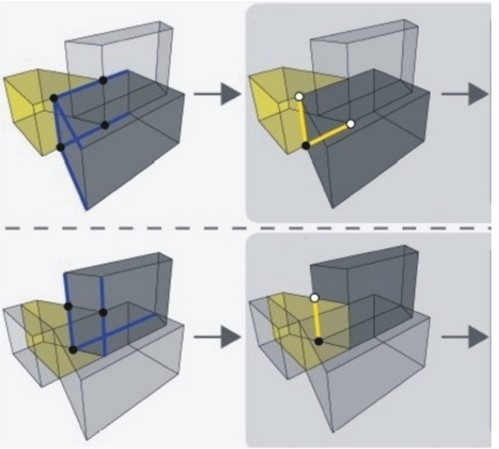
Co-Evolutionary Building Spatial-Structural Design
The intersection of AI and building design offers exciting opportunities to tackle the pressing challenges of the climate and housing crises. By optimizing both buildings and the design processes, generative AI tools can revolutionize how structures are conceived and built. This MSc thesis explores the potential of a co-evolutionary system that blends automated and human-guided design to create 3D
Introduction
The current climate and housing crisis that our society has to face make for a challenging future. Many houses have to be renovated or built using less material, less energy, and in less time. This means that not only the buildings themselves have to be optimized, but the process of designing these buildings as well. To facilitate this, an AI toolbox was developed, which allows for automated design and optimization of buildings. Besides, generative AI tools such as ChatGPT and Stable Diffusion can actively contribute to co-creative design by collaborating with humans. Such generative AI models can potentially enhance ideation and problem-solving by contributing to specific aspects of a design process. The role of Generative AI is increasingly extending, ranging from image generation to evolutionary computations, where AI systems can evolve design solutions over iterations, integrating user feedback to refine creative outputs. What remains unclear is how human-in-the-loop methods impact generative AI processes and can enhance not only the output of AI systems but the processes as well.
Research Goals
In this MSc-thesis project you will investigate the role of generative AI within building design processes. You will design a co-evolutionary system capable of generating 3D building designs with and without user intervention. Using the BSO Toolbox, you will investigate the use of generative AI in converting spatial design to structural designs. Finally, a mixed-method approach will be used to investigate the differences in perceived diversity (and related creativity) between AI- and human-AI generated output.

Figure 1, generation of architectural geometries, AI design studio experiments, fully automated spatial-structural design.
Method
This project will start with literature research on artificial intelligence, building design, and user interaction. Then, the BSO Toolbox will be explored and components relevant to the project will be identified. An initial implementation in which users can interact with the system will be designed and developed using C++. Then, the system will be expanded to support user modifications in-between iterations, allowing for human-AI co-creation. Finally, a user-study will be conducted to compare a fully automated design process with a human-AI co-creative design process in terms of diversity (and related creativity). Example parameters for comparison include the disciplinary quality and perceived creativity of the system’s output, the presence of certain disciplinary elements, and most importantly, a dissimilarity measure as proposed by LIACS, Leiden University (Ksenia Pereverdieva).
Requirements
We are looking for a motivated student with an interest in using AI, design, programming (C++), and user-studies to create a novel co-evolutionary design system. As user-studies are part of this project to verify the impact of the final implementation, experience with conducting user-studies is appreciated, but not strictly necessary. Situated on the boundary between domains such as building structural design, AI, and psychology, this multidisciplinary research project will likely result in a publication. This project will be supervised by a diverse team spanning across different departments to provide ample support in all aspects of the project.
Supervisors
Dr. Ir. Hèrm Hofmeyer (BE-SED) & Dr. Ir. Sanne Schoenmakers (IE&IS-HTI), Ir. Tessa Ezendam (BE-SED) & Ir. Ralf Schmidt (BE-SED + IE&IS-HTI). If you would like to have more information on the project, do not hesitate to contact Dr. Hèrm Hofmeyer, VRT 9.32, 040-247-2203, h.hofmeyer@tue.nl.